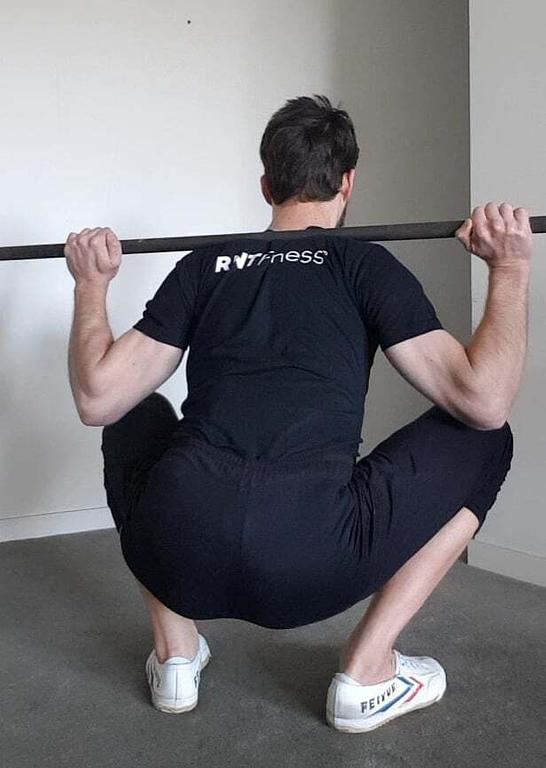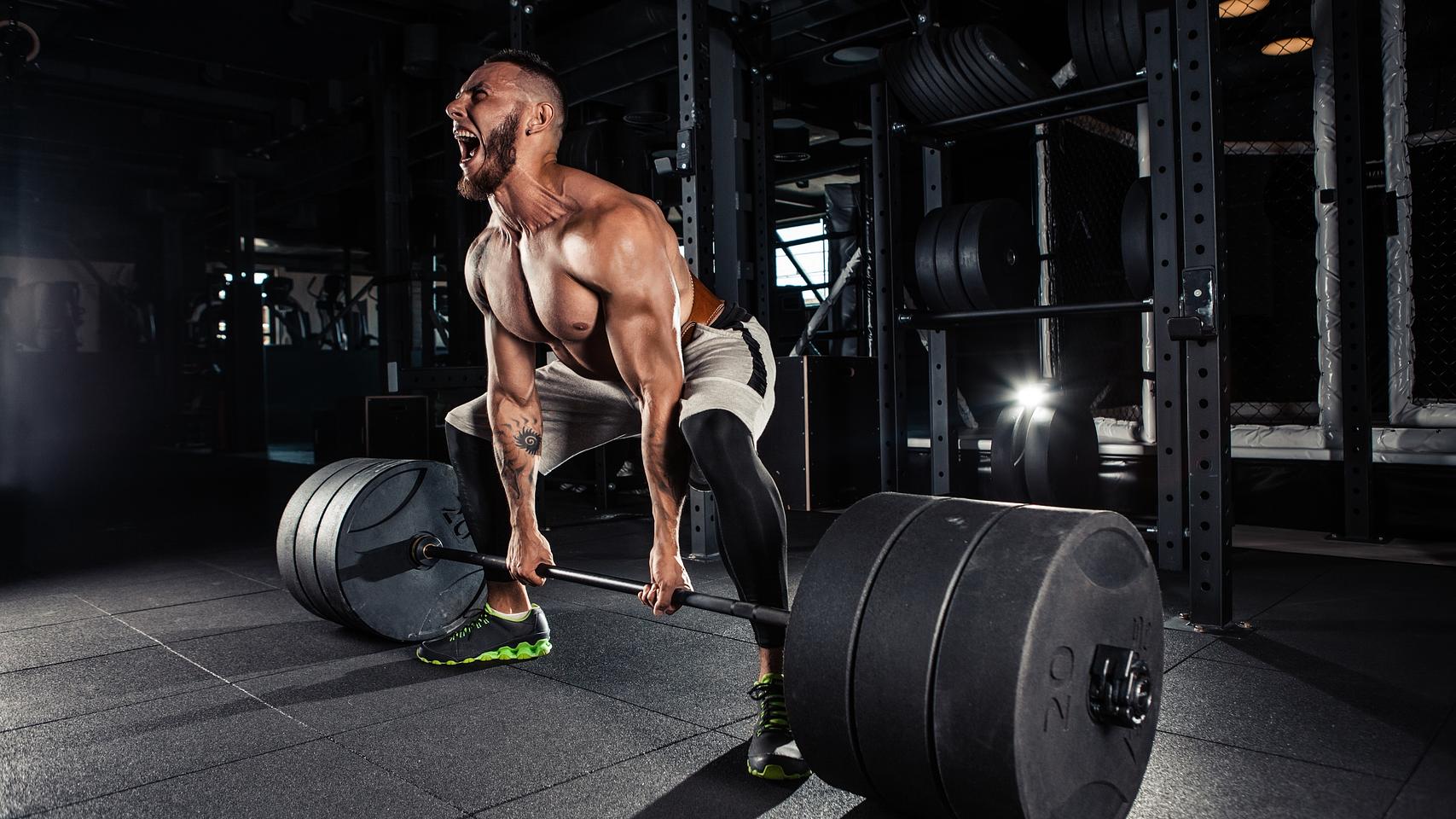Does this make them bad exercises?
Not at all. But for me, and for some of you, there are better options.
Unless you plan to compete in powerlifting, there’s no compulsory need to squat, bench and deadlift.
No exercise is indispensable, and if your goal is body composition, you need to find YOUR big three that will be the ‘money makers’ in driving change in your physique.
You’ll often hear me talk about indicator exercises, and the importance of having key lifts within specific movement patterns to track closely and progress.
But because we’re dealing with body composition, and everyone’s differing structures, muscle insertions, injury history etc., those indicator lifts don’t need to be limited to just the squat, bench and deadlift.
There was a period of my training when I was dabbling in powerlifting competitions and I would focus my training around the ‘big 3’. I worked on perfecting my technique and building strength sensibly, but ultimately my knees, shoulders and low back just kept getting hurt. And that’s when I made my switch to exclusively focusing on bodybuilding.
Don’t get me wrong, I think the big 3 are great movements. The problem is, you need to be built right to use them progressively over time.
How Do I Find My Big 3?
- Can you do it pain free?
- Can you load it progressively?
- Can you feel the right muscles working?
In my own training, the key indicators I use are the following:
Quad Dominant: Leg Press, Hack Squat and Walking Lunge
What you’ll notice is three things:
- I’ve split it into four movement patterns, as opposed to just squat / bench / deadlift variations. Why? Because the upper back and lats only work isometrically when deadliftling, and never go through a full range of motion. So to create maximal physique development, and balance out the pressing work, we need to be progressive in our upper back work too.
- There are three lifts per movement pattern. If the goal is body composition and muscle gain, we need variety to make sure we don’t have weak links, to prevent overuse, and to allow more sustained load progression without plateaus (through rotation). While I’ll be making a conscious effort to drive them all up over time, I’ll still mentally place more emphasis on one per group.
- It can be a squat / bench / deadlift, but it doesn’t need to be in the traditional form. Instead, what you’ll notice is I’m focusing on a variation of the lift that I like best. For example, instead of pressing off a bench, I press off the floor. Why? I find it keeps my shoulders safe (my arms are very long!), I feel my chest and triceps work hard, and I can load it progressively over time.
His indicators are:
Quad Dominant: Back Squat
What you’ll notice is the following:
1) His only indicator exercise for his quads is the traditional back squat. Why? Because he gets everything he could possibly need in the way of quad and glute development from it. He’s built for it, can squat perfectly and so doesn’t need much else.

Comparing Body Types
When you look at my body type, I’ve got long legs, long arms and a short torso. This is ideal for deadlifting (which is why two of my posterior chain indicators are deadlift variations), but terrible for traditional squats and bench presses.
Compared to this, he’s the opposite: short legs, short arms and a long torso. Instead, he’s well suited to squatting and benching (albeit for strength, not hypertrophy) but not well built for deadlifts.
Squat Or Not?
Now look at the picture on the right. I’ll typically be bent over more, with my hips shot way back if I want to reach about parallel depth. This will build strong hips and a lower back, but there won’t be much quad growth.
If you’re in the first camp, keep squatting! It’ll likely be the only leg exercise you’ll need.
If you’re somewhere in the middle, I’d keep squatting, but also make sure you’re keeping an eye on other leg exercises too.
If you’re on the right, it’s probably time to reassess why you’re still squatting. Look at Dorian Yates, 6x Mr Olympia. He realised early on that back squatting religiously wasn’t doing anything for him besides giving him hip issues. It was only when he switched to Smith machine squats, leg presses and hack squats as his ‘indicators’ that his leg development blew up.
The reason why machines work well for these people though is because the core and lower back are removed from the equation – which otherwise place a huge limiting factor in the load being lifted when otherwise free squatting, given the angle of the body.
Why Don't I Deadlift?
The deadlift is a great movement to build overall strength and mass. But if muscle building is your sole goal, it’s overrated because:
3) Injury risk and recovery. I’ve seen more injuries come from traditional deadlifts than just about any other exercise. This is usually the lifter’s poor technique being at fault, but the point is that it’s so easy to break down during a deadlift that the risk isn’t worth the reward. The recovery factor is also an important consideration. A heavy deadlift session can leave you wiped for days, with very little muscle building potential given back in return.
If I’m New To Lifting, Should I Ever Squat/Bench/Deadlift?
It’s an important rite of passage to go through in your training career, and one that will ultimately teach you more about your body.
If I didn’t spend the years squatting, benching and deadlifting every week, I wouldn’t have learnt what worked for me. Granted, I should have stopped earlier before the injuries kicked in, but it makes me a better coach and lifter for it.
I don’t want anyone else to pick up injuries to learn it the hard way, but I do think learning how to perform the ‘big 3’ exercises with perfect technique for your body type (e.g. low bar vs high bar, close vs wide, sumo vs conventional) will help navigate you towards finding the variations that work best for you (if at all necessary).
Conclusion
What I want you to take from this is, question if they’re the most optimal exercises for your goal of improving your physique and overall body composition.
And unless you’re built perfectly for the specific lift, chances are they’re not.
If this is the case, it’s time to find your own indicator lifts that you can focus on progressively overloading pain-free with perfect form, in a wide variety of rep ranges over time.

.png)
.png)
.png)